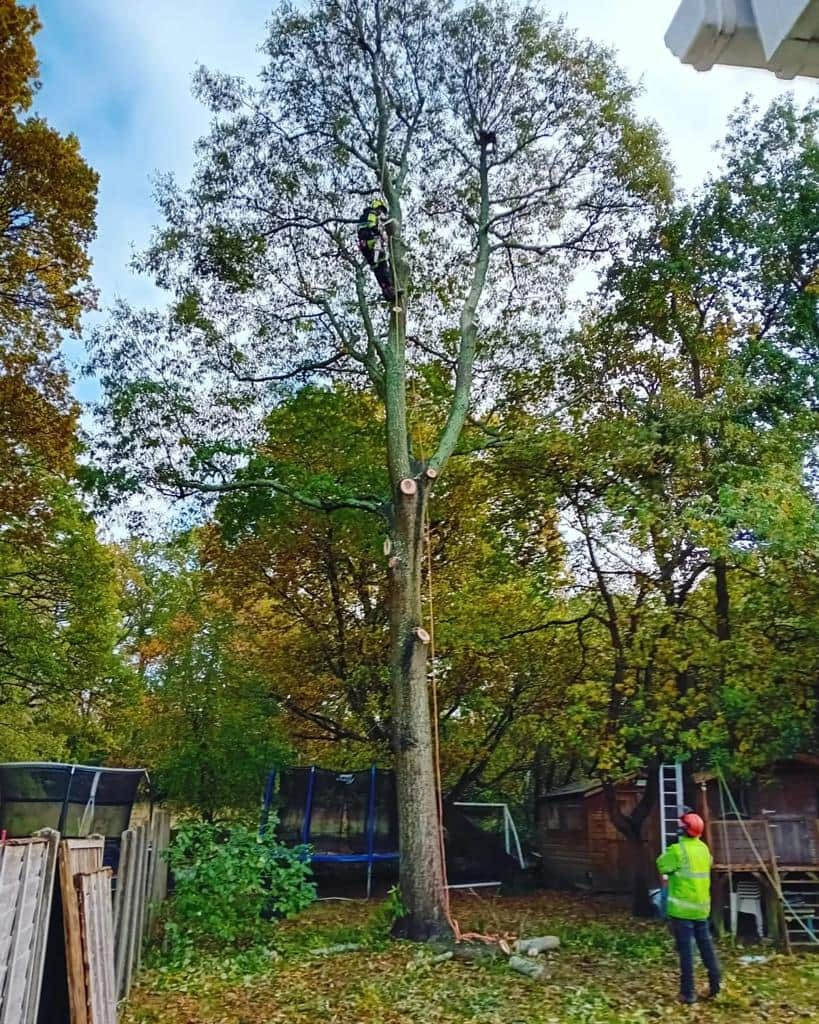When removing a tree, many homeowners consider replanting a new one in the same location. Stump grinding is an effective method to eliminate tree stumps and improve the appearance of a landscape. However, is it advisable to replant in the exact same spot? If you are considering replanting a tree in Selsey, West Sussex after stump grinding, there are important factors to take into account.
The Challenges of Replanting in the Same Spot
1. Soil Depletion
Trees extract essential nutrients from the soil over time. If a tree has been growing in one spot for years, the surrounding soil may be lacking in vital nutrients needed for a new tree to thrive.
2. Root Remnants and Compaction
Stump grinding removes the visible part of the stump but often leaves behind roots underground. These decaying roots can create challenges for new root growth, making it difficult for a new tree to establish itself.
3. Fungal Growth and Disease Risks
If the previous tree was removed due to disease or decay, harmful fungi and bacteria may still be present in the soil. This could pose a risk to any new tree planted in the same area.
4. Soil Structure and Drainage Issues
The process of stump grinding leaves behind a mix of sawdust and soil, which can lead to poor drainage and compaction. This type of soil does not provide the best conditions for a young tree’s root system.
Steps to Successfully Replant in the Same Spot
While there are challenges, it is still possible to replant in the same location with the right preparation. Here are some essential steps to improve the chances of a new tree thriving:
1. Remove Excess Wood Chips and Debris
After stump grinding, large amounts of wood chips and sawdust remain in the soil. These materials decompose over time, using up nitrogen in the process. Removing as much of this debris as possible will prevent nutrient deficiencies in the new planting site.
2. Improve Soil Quality
Replenishing the soil with organic compost and nutrient-rich topsoil will create a healthier environment for new tree growth. Mixing in fresh soil will also help with aeration and drainage.
3. Choose a Smaller or Different Tree Species
If the previous tree was large, it likely had an extensive root system. Choosing a smaller tree or a different species with a shallower root system can help avoid interference from old roots.
4. Adjust the Planting Position
If space allows, consider planting the new tree slightly off-centre from where the old one stood. This helps to avoid areas where old roots are still decomposing.
5. Monitor for Pests and Disease
If the previous tree suffered from disease, ensure that the soil is treated before replanting. In some cases, waiting a season before replanting can help prevent potential issues.
Alternative Options
If replanting in the exact same spot is not viable, consider the following alternatives:
- Plant the new tree nearby – Moving it slightly to an adjacent area can help avoid soil depletion and root obstruction.
- Use the site for a different landscaping feature – A flower bed, decorative shrubs, or a lawn extension may be suitable alternatives.
- Treat the soil and wait a season – Allowing the soil to recover before planting a new tree can improve its chances of success.
Conclusion
Replanting a tree in the same spot after stump grinding is possible but requires proper preparation. Removing debris, replenishing nutrients, and selecting the right tree species will help ensure successful growth. If you need professional tree surgery services in Selsey, West Sussex, LM Tree Surgery Selsey can provide expert advice and assistance with stump grinding and replanting solutions. Contact us today for a consultation on maintaining a healthy and thriving landscape.
Call us on: 01243 217 387
Click here to find out more about LM Tree Surgery Selsey
Click here to complete our contact form and see how we can help with your tree needs.

